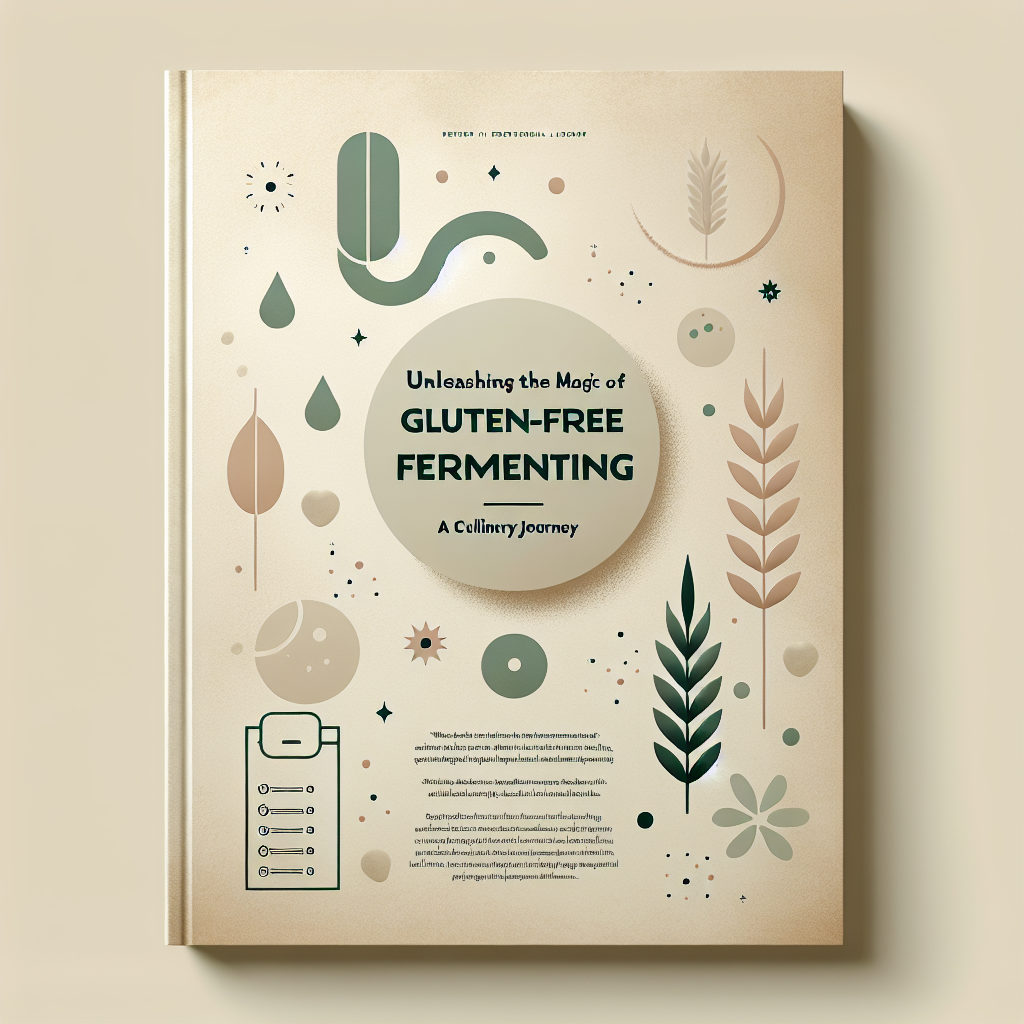Isn’t the world of gluten-free fascinating? It all started with simply replacing your regular bread with gluten-free bread, and now it seems we’ve grown into an entire universe of gluten-free culinary delights. And let me tell you — we’re shining brighter than ever. One trend that has caught my fancy lately is gluten-free fermenting. Don’t worry, I’m not going buggy on you, it’s all about fermentation.
Bugs have always played an essential role in many food processes, and fermentation is no exception. This age-old technique involves bacteria and yeasts converting food compounds into other substances. Sounds a bit intimidating? It isn’t, promise. Plus, depending on the kind of fermentation process, the resulting products can range from tangy fermented veggies to mouthwatering dairy-free sour cream. And the best part? Many of these products are naturally gluten-free.
But it’s not just about great tastes and new flavors. Fermented foods offer numerous health benefits too. They’re rich in probiotics and known to boost gut health, support digestion, and even aid in weight loss. And for us, part of the gluten-free fraternity, these benefits are especially vital.
Have I peaked your interest? Then toss on those aprons and dive deeper into the world of gluten-free fermenting with me.
On your journey towards mastering gluten-free fermentation, the first step you’ll take is understanding the difference between fermenting and pickling. While both processes aim to preserve food and enhance flavors, pickling involves using vinegar (an acid), while fermenting creates lactic acid. In fact, [fermentation significantly differs from pickling](hyperlink), and I explored the details in one of my previous posts.
But today, we’re focusing on the gluten-free aspect of fermentation. Thankfully, many popular fermentation ingredients, like vegetables, dairy, and certain grains like buckwheat, are naturally gluten-free. But here’s a pro-tip, when it comes to starters or cultures, always double-check the labeling for any gluten content.
My first adventure into gluten-free fermenting started with a simple yet delicious classic — homemade sauerkraut. Cabbage, salt, mason jar, and a bit of patience is all it takes. The tangy, umami kick of the sauerkraut elevated my gluten-free burgers and salads to a whole new level. Trust me, once you’ve had homemade, store-bought just won’t do.
My next venture was to conquer dairy-free, gluten-free sour cream. Store-bought versions often have gums or stabilizers that might upset your tummy. My version was creamy and rich, and it paired perfectly with homemade gluten-free tacos. You can [find the recipe for this](hyperlink) in another one of my posts, perfect for Taco Tuesday!
Fermenting doesn’t stop with veggies and dairy alternatives. Have you ever tried fermented oats? It may sound a little odd, but the result is a delightful tangy porridge, full of gut-friendly bacteria. To prepare gluten-free fermented oats, always choose certified gluten-free oats to ensure it’s free from any cross-contamination.
To the uninitiated, the idea of fermenting your food might sound intimidating, or even a bit strange. But if there’s one thing I’ve encountered on my gluten-free journey, it’s that the strange often leads to fantastic flavors and even better health benefits. And hey, isn’t that what we’re all about here?
Speaking of health benefits, fermented foods are known to benefit gut health, which is a critical concern for many of us living a gluten-free lifestyle. Although the [benefits of gluten elimination for gut health](hyperlink) are well established, adding fermented foods to your diet can take those benefits up a notch.
In conclusion, gluten-free fermenting is a culinary trend that’s both scrumptious and incredibly easy to incorporate into our lifestyles. It offers an ability to experiment with fascinating new flavors and innovate our gluten-free cooking, all the while nourishing our health.
Embarking on this fermenting journey may seem like stepping into unknown territory, but believe me; it’s a worthwhile adventure. So, let’s grab our mason jars, gather our fruits and veggies, and unlock the magic of gluten-free fermenting together.
**Category: Baking & Cooking Science**


